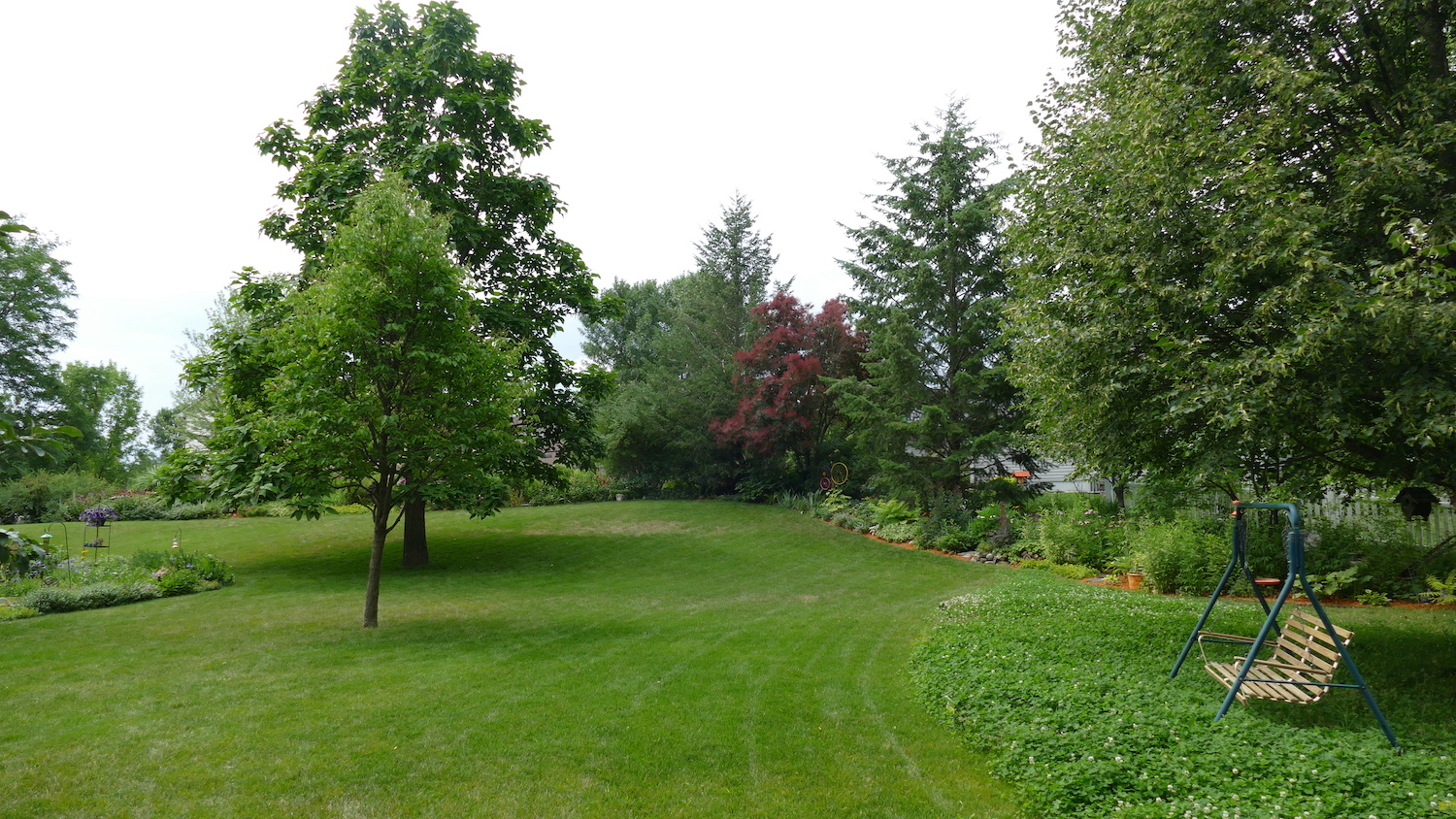150 Tips: Spring Lawn Care
A lawn, said Leon Snyder in a 1953 issue of Minnesota Horticulturist, is “like the canvas on which an artist paints his picture—a pleasant background for the flower and shrub border, and the cool shade of lawn trees.”
Lawn care routines have varied a lot over the 150 years that the Minnesota State Horticultural Society has been publishing garden information, from none at all to multiple passes with fertilizer and herbicides to bee lawns. But one thing has remained the same: the time to focus on your lawn is spring and fall! If you are growing a turf grass, always remember that it is a cool season crop and its growth will slow way down in summer. That is the worst time to try to seed, put down sod or fertilize your lawn.
A few other tips from the archives:
Bare spots may need more than reseeding in spring. If soil is showing or your lawn looks bare in other ways, do some detective work to figure out why it might be thin, MSHS advised in a 1964 article. Fortunate for today’s “Sodfathers,” the University of Minnesota offers great information on what might be causing lawn problems. If you do reseed, be sure to prep the lawn properly and add some organic matter.

Think of lawn as a lake or river. Former By Design columnist Don Engebretson encouraged gardeners to think of their lawn as a path, lake or river. It’s a place for your eye to rest or a soft carpet on which to move from one area to another in your landscape. It should not be the main feature of your landscape — just a pleasant break from the excitement of trees, shrubs and perennials.
Mow high and not on a schedule. In a 2004 article on lawn care, Erin Hynes recommended that cool season grasses be kept 2 to 3 inches tall. Taller blades will shade out weeds and defer damage if there is a drought. Mow, not on a schedule, but when the lawn needs it. You may mow twice a week in May and early June and no more than once every 10 days in July and August when the turf grows more slowly. The goal in mowing is to cut off no more than one-third of the lawn’s height.
![]() Leave your clippings. If you don’t scalp your lawn, leaving the grass clippings where they lie is a gentle form of fertilizer. And, Hynes noted, it does not cause thatch.
Leave your clippings. If you don’t scalp your lawn, leaving the grass clippings where they lie is a gentle form of fertilizer. And, Hynes noted, it does not cause thatch.
Fall is a pivotal time for your lawn to make a miraculous come-back. Help your lawn have a head start in the spring by taking good care in the fall. This means regular watering, mowing at the usual height for as long into the season as required, and keeping the lawn generally clear of debris, according to a tip from October 1968.
Check back twice a month for more tips from the MSHS archives.
[fl_builder_insert_layout id=26733]

We have a cabin in Central Wisconsin and have never had a healthy lawn. Very sandy soil and mostly shade. What grass seed would you recommend and also another tips for a healthy lawn in 2022?